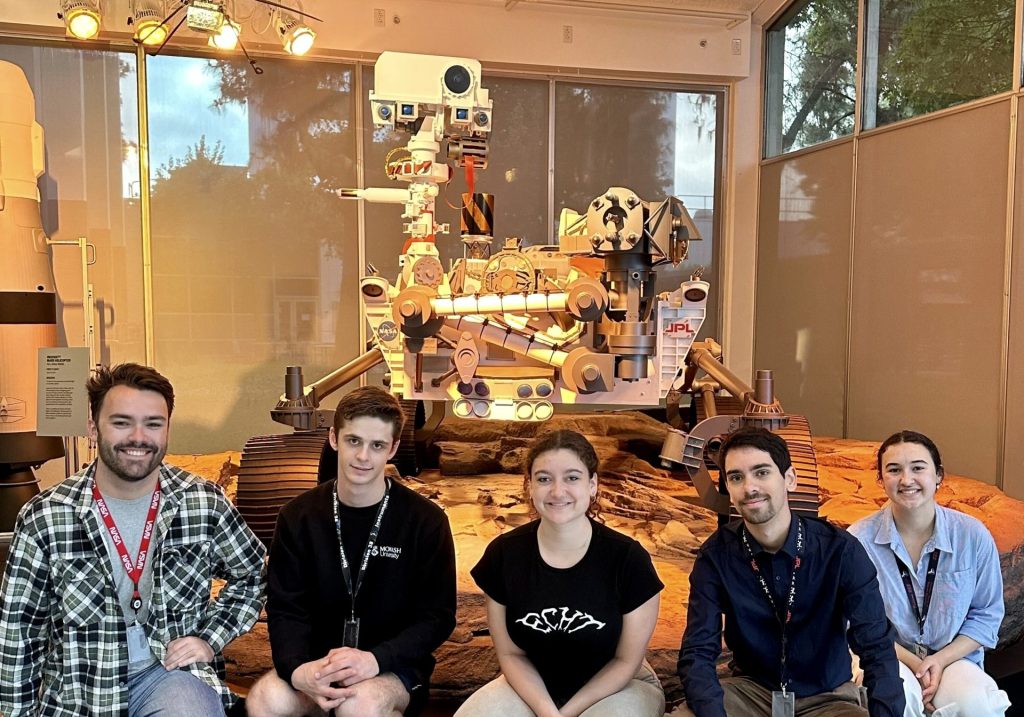Engineers Australia student member Tully Mahr is one step closer to her dream of a career in the space sector — and perhaps even stepping into outer space — after a 10-week stint working in NASA’s Jet Propulsion Laboratory (JPL) in Pasadena, California.
Currently studying for a Master of Mechanical Engineering at the University of Melbourne, Mahr’s place at NASA was the result of an internship through Monash University’s National Indigenous Space Academy (NIA) and supported by the Australian Space Agency.
“To work at NASA was always my childhood dream,” Mahr, who has now returned home to Australia, told create.
“The Australian space agency wasn’t around then, so to work in space, NASA was the be all and end all.”
Describing her experience at NASA as “pretty unbelievable”, Mahr explained that her work brought together science and engineering for a project conducted in JPL’s Origins and Habitability Lab.
This work involved mineralogical analysis of compositional gradients in hydrothermal chimneys.
“Hydrothermal vents — or hydrothermal chimneys — in the ocean are essentially underwater volcanoes, and [that] is where it is assumed the origins of life to have originated,” she explained.
“The lab itself, as the name states — Origins and Habitability — looks at the origins of life, particularly in these environments, and the habitability of other planets, because we know that there are hydrothermal vents on various other planets and moons, particularly in our solar system.”

Laying the groundwork for life
Mahr’s contribution was creating an abiotic baseline for the experiments, to which other researchers can apply their own astrobiological expertise.
“I was actually growing hydrothermal chimneys in a laboratory setting and investigating different chemical compositions and their gradients,” she said.
“It’s not overly common for hydrothermal chimneys to have been grown in the lab. It’s still relatively — I don’t want to say new — but innovative; there’s still a lot to discover in the area.”
As a student whose undergraduate study had been in science, Mahr was inspired by how the experiments brought scientific and engineering practises together.
“The lab that I went to was looking for people with an engineering background to bring in an engineering perspective into the astrobiology or biology work that they do,” she said.
“They were very invested in bringing in new perspectives and understanding, particularly from an engineering perspective, … how these chimneys grow, and how we can create technology to investigate these hydrothermal vents on interplanetary bodies.”
That highlighted for Mahr how the unexpected ways that engineering and science could be quite distinct.
“There is a very different approach to science as there is to engineering,” she said.
“I was there doing a more science-[oriented] internship while studying engineering and [through] bringing engineering perspectives into this science background, I uncovered this niche intersection between the two that I definitely want to work in in the future.”
It gave her, she said, a “whole new perspective”, and she now hopes to explore this intersection through further study, including, once she has finished her master’s, a PhD.
Ancient knowledge, bright future
There are other perspectives that Mahr would like to bring into her doctoral study as well. She would like to see the space sector benefit from Indigenous knowledges — particularly considering Indigenous people were Australia’s first engineers and scientists.
“A lot of the traditional thinking of Indigenous people is really valuable knowledge and brings in a new perspective, and we know that when we have diverse perspectives, it drives innovation,” she said.
“Indigenous people are severely underrepresented in the field of STEM — particularly engineering and science — so there isn’t a huge opportunity or a drive at the moment to incorporate those knowledges. I hope to be that change.”
And after her study, Mahr still hopes she might one day put on a space suit herself.
“It’s still a big goal to become an astronaut — obviously, that’s a very lofty ambition,” she said.
“Whether that happens or not is to be determined, but to work in a space agency is still the end goal.”
